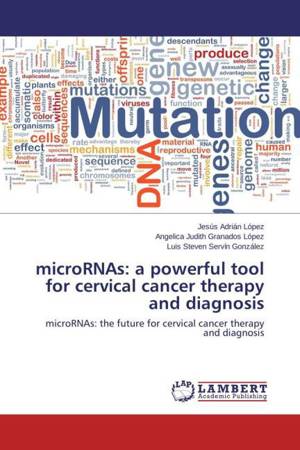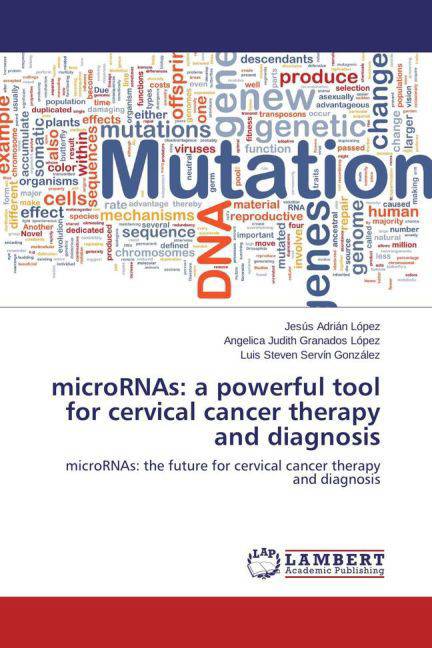
Je cadeautjes zeker op tijd in huis hebben voor de feestdagen? Kom langs in onze winkels en vind het perfecte geschenk!
- Afhalen na 1 uur in een winkel met voorraad
- Gratis thuislevering in België vanaf € 30
- Ruim aanbod met 7 miljoen producten
Je cadeautjes zeker op tijd in huis hebben voor de feestdagen? Kom langs in onze winkels en vind het perfecte geschenk!
- Afhalen na 1 uur in een winkel met voorraad
- Gratis thuislevering in België vanaf € 30
- Ruim aanbod met 7 miljoen producten
Zoeken
microRNAs: a powerful tool for cervical cancer therapy and diagnosis
microRNAs: the future for cervical cancer therapy and diagnosis
Jesus A. Lopez, Angelica Judith Granados López, Luis Steven Servín González
Paperback | Engels
€ 26,95
+ 53 punten
Omschrijving
Tumor cells have developed advantages to acquire hallmarks of cancer through cell signaling pathways misregulation. The sequential activation of genes in a pathway is regulated by miRNAs. Loss or gain of miRNA expression could activate o repress a particular cell axis. miRNAs are grouped in clusters with anti-oncomiRs and oncomiRs function that regulate MAPK, PI3K-AKT, NOTCH, proteasome-culling rings, and apoptosis cell signaling. In the progression of cervical cancer there are three well-established steps to reach cancer that we used in the model proposed here. The first step comprises gene changes that occur in normal cells to be transformed into immortal cells, the second comprises immortal cell changes to tumorigenic cells, the third step includes cell changes to increase tumorigenic capacity, and the final step covers tumorigenic changes to carcinogenic cells. Altered miRNAs and their target genes are located in each one of the four steps of the multistep model of carcinogenesis. Pathways regulated by miRNA families in combination with carcinogenesis model will increase the knowledge of cervical cancer therapeutic, diagnostic and prognostic methodologies design.
Specificaties
Betrokkenen
- Auteur(s):
- Uitgeverij:
Inhoud
- Aantal bladzijden:
- 76
- Taal:
- Engels
Eigenschappen
- Productcode (EAN):
- 9783659767333
- Verschijningsdatum:
- 13/08/2015
- Uitvoering:
- Paperback
- Afmetingen:
- 150 mm x 220 mm
- Gewicht:
- 122 g

Alleen bij Standaard Boekhandel
+ 53 punten op je klantenkaart van Standaard Boekhandel
Beoordelingen
We publiceren alleen reviews die voldoen aan de voorwaarden voor reviews. Bekijk onze voorwaarden voor reviews.









